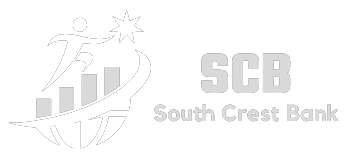Debt Collection and Recovery
In modern times, both debt collection and recovery processes have become increasingly crucial and intricate. The traditional approach of merely deciding to collect and send bailiffs is no longer adequate. Customers now utilize various channels to borrow, pay, and communicate, and interactions between lenders and customers happen across multiple devices. Additionally, debts are often varied, and customers may have multiple credit obligations, creating challenges for recovery efforts. That said, your company should have a strategized debt collection process that utilizes available resources while minimizing costs.
What is debt collection?
When a payment for a loan or credit service is not made, the creditor will contact the debtor to remind them of the payment. This is known as debt collection, and it is usually handled in-house by the creditor through methods such as phone calls, emails, and letters. Larger businesses typically have a dedicated department for debt collection, which may take action after 30 days of non-payment. If the debtor cannot be reached, the creditor may engage a third party for debt recovery or resort to legal action.


What is debt recovery?
Debt recovery refers to the process of attempting to collect unpaid debts from individuals or organizations who have failed to fulfill their financial obligations. Debt recovery can be initiated by the original creditor, or by a third-party debt collection agency hired by the creditor. The debt recovery process typically involves several stages, including initial contact with the debtor to request payment, negotiating payment plans or settlements, and taking legal action if necessary. The goal of debt recovery is to recover the outstanding amount owed while maintaining a positive relationship with the debtor, wherever possible.
Recover the outstanding amount using
Debt collection software
Adopting a comprehensive, technology-focused, and multi-channel approach that covers the entire credit cycle from origination to write-off can significantly enhance collections and recoveries. By leveraging appropriate data and integrating it into suitable systems and processes, organizations can gain insights into customer motivations, risk levels, revenue opportunities, and improve productivity and performance within the institution. With a better understanding of how to operate, who to engage with, and how to achieve the desired outcome, organizations can improve collections and recoveries to the extent that certain at-risk accounts may not even become delinquent.

1- Fico Debt Collection and Recovery
Read more
customer communications for debt collection and recovery, and collections management to strike a balance between operational efficiency and customer experience.
2- LexisNexis Risk Solutions
LexisNexis Risk Solutions is a trusted provider of data analytics for organizations seeking to manage risks and improve outcomes. The software supports informed decision-making while maintaining the highest standards of privacy and security. To optimize debt recovery efforts, it is advised to incorporate an analytics and data cleanliness component into your collections strategy. This can facilitate the efficient collection and refinement of data. Furthermore, this software provides valuable insights that aid in segmenting and prioritizing accounts based on payment size and the probability of customers making payments within the next three months.
3- The collection CRM software from Leadsquared
By utilizing debt collecting software, small businesses can automate communication processes with debtors and streamline associated tasks. This software enables the segmentation of borrowers based on factors such as debt type, repayment history, and financial status, among others. This data can be leveraged to tailor communication with debtors effectively. Additionally, payment notifications can be sent to customers via SMS, email, and other communication channels, which can facilitate debt collection efforts. The software also allows lenders to include payment links in these messages, enabling borrowers to make instant repayments.

